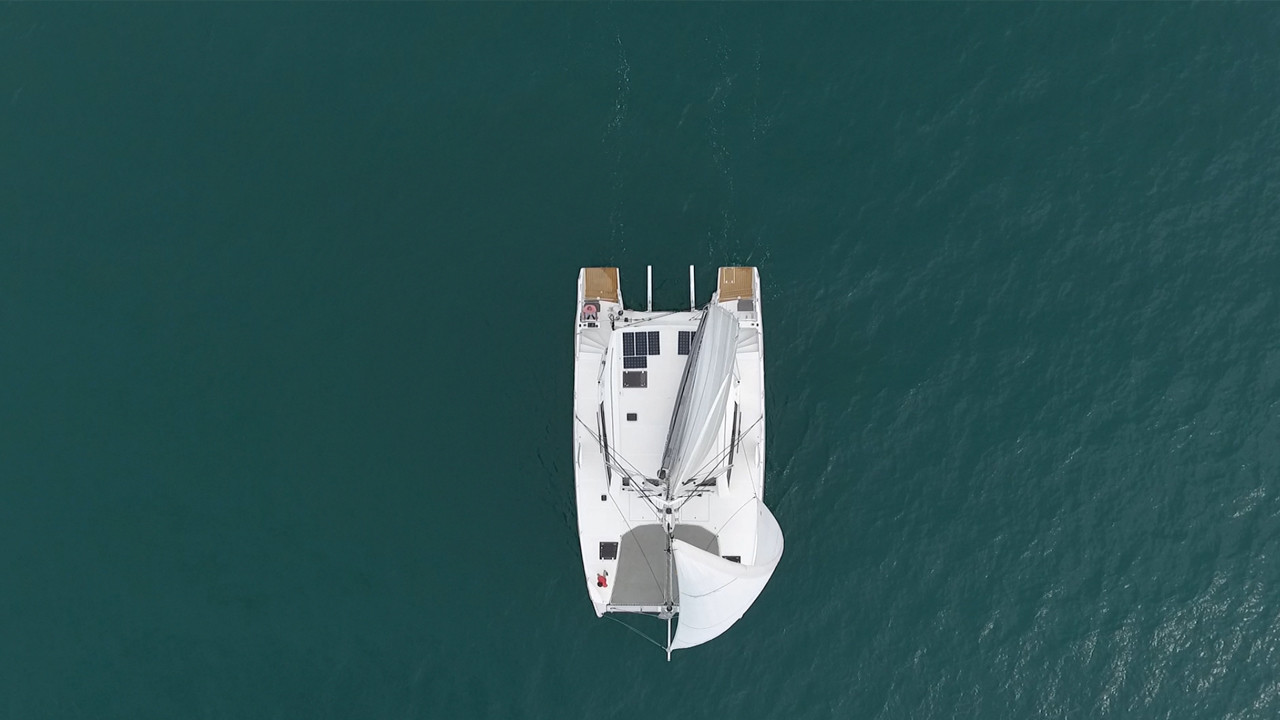Bali Catsmart
- Bali Catsmart
The new Catana range debuted at the Cannes Yachting Festival back in 2013 with the 59. The freeboard height was more than generous, the steps in the hull very marked (you could almost call them chines!), and the general silhouette with sharp, inverted bows cut radically with the previous generations (Christophe Barreau). The concept has continued to evolve over the past five years with a 62 footer (tested in MW153), and even in a Maxi version at 70 feet (see MW146), which completed a remarkable and very fast circumnavigation in 2017.
Until recently, Catana (like most manufacturers) did a lot of subcontracting (design, fittings, and composite parts). But in contrast to the trend, Olivier Poncin chose in 2007 to repatriate several strategic functions back to the yard. So all the joinery became in-house, the upholstery makes use of quality local craftsmen and the design office underwent a real transformation by taking on overall design and conception, and therefore responsibility for the architectural signature. Prestigious consultants (such as Marc Lombard) continue to collaborate, but through this approach, the manufacturer seems to want to keep full control of its new range.

Beyond computer-aided design that allows for extraordinary precision assembly and perfect modeling of the vessel and its secondary elements (small sections, appendages, furniture, floors, etc), it's all the composite manufacturing done at Canet en Roussillon, which has seen a significant evolution in recent years. The manufacture of the integral structure of the 53 now uses contemporary technical solutions by reinforcing its methods...
Boat Test price5.00€ Inc. tax
Purchase
What readers think
Post a comment
No comments to show.